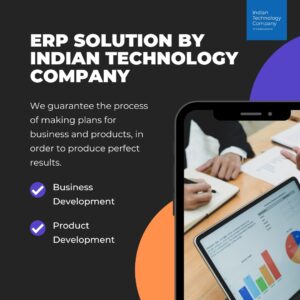Why ERP Implementations Fail (And How You Can Get It Right)
ERP (Enterprise Resource Planning) systems are designed to streamline operations, enhance productivity, and integrate business processes across an organization. Despite their benefits, ERP implementations often fail due to various challenges that arise during planning, execution, or post-implementation phases. Understanding the causes of failure and taking corrective measures can ensure the success of ERP systems.
- Poor Project Planning
One of the most common reasons for ERP implementation failure is a lack of detailed planning. Organizations often underestimate the resources, time, and scope required for a successful rollout.
Common Mistakes
- Inadequate project roadmap and milestones.
- Unrealistic deadlines for system deployment.
- Poor understanding of the organization’s business requirements.
Solution
- Develop a detailed project plan with realistic timelines.
- Conduct a thorough analysis of current processes and expected improvements.
- Allocate adequate time for training, testing, and feedback.
- Lack of Management Support
ERP implementations require strong backing from leadership. Without senior management support, the project can lack direction, budget, and strategic alignment.
Common Mistakes
- Insufficient involvement of key decision-makers.
- Minimal engagement of stakeholders during critical phases.
Solution
- Secure commitment from top management to drive the project.
- Include decision-makers in project reviews and progress updates.
- Ensure clear communication of ERP goals across all levels.
- Resistance to Change
Employees often resist adopting a new ERP system because they are accustomed to existing processes. Resistance can slow implementation, reduce adoption rates, and lower productivity.
Common Mistakes
- Lack of communication regarding the benefits of the ERP system.
- Failure to address employee concerns and provide adequate training.
Solution
- Communicate how the ERP system will improve efficiency and job roles.
- Involve employees in system design and testing phases.
- Provide comprehensive training and ongoing support.
- Insufficient Training and Support
ERP systems can be complex, and a lack of user training often leads to improper usage or system rejection. Without proper knowledge, employees may not fully utilize the system’s capabilities.
Common Mistakes
- Treating training as a one-time exercise.
- Ignoring the importance of post-implementation support.
Solution
- Develop continuous training programs tailored to different user levels.
- Offer accessible resources, such as user manuals, videos, and help desks.
- Establish a support team to assist users post-implementation.
- Choosing the Wrong ERP System
Selecting an ERP system that does not align with business needs can derail implementation efforts. A mismatch between system capabilities and requirements can lead to inefficiencies.
Common Mistakes
- Choosing software based solely on cost.
- Ignoring scalability and future growth requirements.
- Overlooking industry-specific features.
Solution
- Conduct a thorough needs analysis before selecting an ERP solution.
- Evaluate ERP providers based on industry experience and scalability.
- Perform software demonstrations and proof-of-concept testing before purchase.
- Data Migration Challenges
Migrating existing data into the new ERP system is often more complex than expected. Data errors, duplication, and incomplete migration can cause operational disruptions.
Common Mistakes
- Lack of proper data cleansing before migration.
- Overlooking integration requirements with legacy systems.
Solution
- Clean and validate data before initiating migration.
- Test data transfer processes to ensure accuracy.
- Use data migration tools and consult experts for complex integrations.
- Unrealistic Expectations
Organizations often expect ERP systems to solve all their problems instantly. Unrealistic expectations regarding ROI (Return on Investment) and performance can lead to disappointment.
Common Mistakes
- Expecting immediate results without allowing time for adaptation.
- Overpromising benefits to stakeholders.
Solution
- Set realistic goals and milestones for ERP adoption.
- Measure ROI over a reasonable timeline.
- Align system capabilities with actual business needs.
- Inadequate Testing
Skipping thorough testing can result in technical errors, process bottlenecks, and user frustration after go-live.
Common Mistakes
- Rushing through user acceptance testing (UAT).
- Neglecting performance and integration tests.
Solution
- Perform rigorous testing across all departments before full implementation.
- Address issues identified during testing to avoid future disruptions.
- Include end-users in UAT to ensure system readiness.
FAQs
- What are the common signs of a failing ERP implementation?
Some signs include missed deadlines, budget overruns, resistance from employees, and operational inefficiencies post-implementation. - How long does an ERP implementation take?
The duration varies depending on the company’s size and ERP complexity. On average, it can take 6 months to 2 years. - Can small businesses benefit from ERP systems?
Yes, ERP systems are available in scalable versions for small businesses to streamline operations and improve efficiency. - What steps can organizations take to overcome resistance to ERP adoption?
Organizations should focus on clear communication, involve employees early, and provide thorough training to ease the transition. - How can I ensure data quality during ERP migration?
Data cleansing, validation, and migration testing are essential to ensure that data quality is maintained during the transition.





